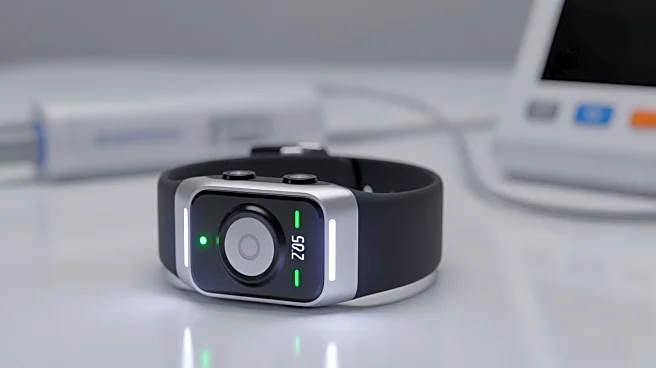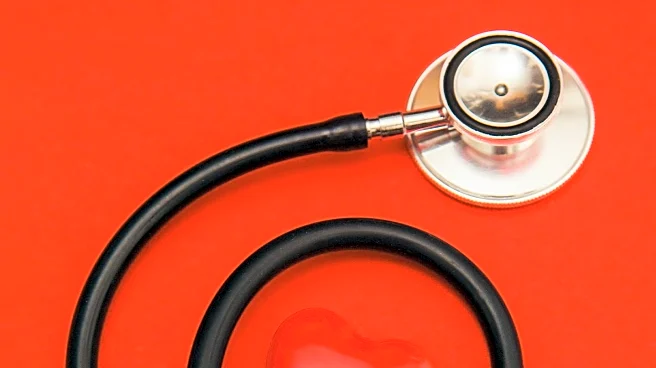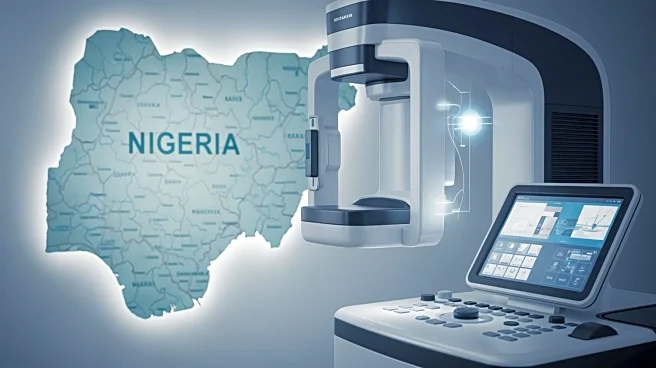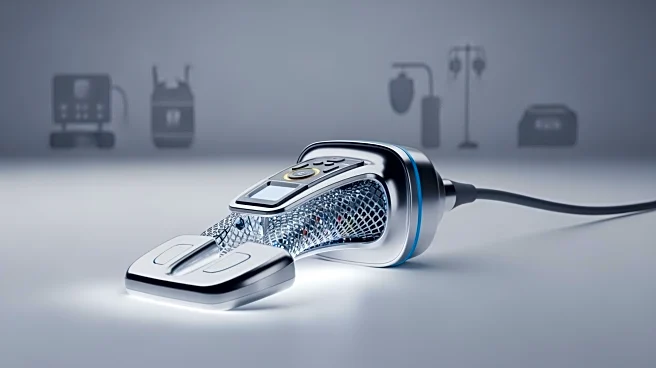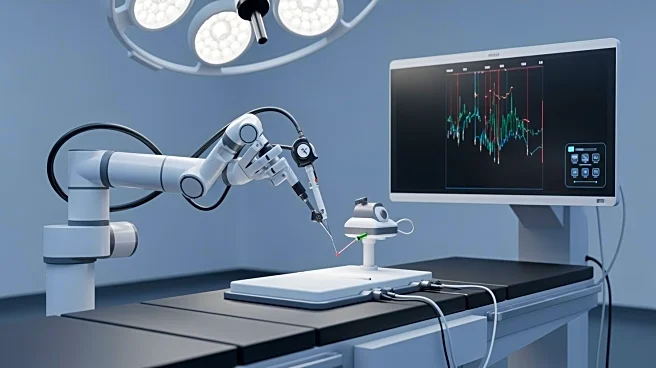What's Happening?
A recent study has evaluated the accuracy of a novel cuffless photoplethysmography (PPG)-based device for continuous blood pressure monitoring in patients who have undergone cardiac surgery. This single-center
prospective preliminary validation study involved 96 adult participants, with an average age of 63.2 years, who consented to the study. The device's data was compared to standard invasive arterial pressure (IAP) measurements. The study assessed 78,659 readings for systolic blood pressure (SBP), 78,818 for diastolic blood pressure (DBP), and 92,544 for heart rate (HR). The correlation coefficients for SBP, DBP, mean arterial pressure (MAP), and HR were found to be high, indicating strong agreement with the reference measurements. The device demonstrated acceptable accuracy, with 95% of SBP and 99.9% of DBP measurements within 10 mmHg of the reference measurement. The study concludes that the cuffless device is a promising non-invasive tool for continuous blood pressure monitoring, though further validation is required.
Why It's Important?
The development of non-invasive, cuffless devices for blood pressure monitoring represents a significant advancement in medical technology, particularly for postoperative care. Traditional methods often require invasive procedures or cumbersome equipment, which can be uncomfortable for patients and challenging in intensive care settings. The introduction of a reliable cuffless device could improve patient comfort and streamline monitoring processes, potentially reducing healthcare costs and improving outcomes. This technology could benefit hospitals and healthcare providers by offering a more efficient and less intrusive method of monitoring vital signs, which is crucial for early detection of complications and timely interventions.
What's Next?
Further studies are necessary to validate the findings of this preliminary study according to updated validation protocols for pulseless devices. These studies will likely focus on larger sample sizes and diverse patient populations to ensure the device's accuracy and reliability across different demographics and clinical settings. Additionally, the integration of such devices into standard postoperative care protocols could be explored, potentially leading to widespread adoption in hospitals and clinics. Stakeholders, including medical device manufacturers and healthcare providers, may invest in further research and development to enhance the device's capabilities and expand its applications.
Beyond the Headlines
The adoption of cuffless blood pressure monitoring devices could have broader implications for patient care and medical technology innovation. It may encourage the development of other non-invasive monitoring tools, fostering a shift towards more patient-friendly healthcare solutions. Ethical considerations regarding data privacy and security will need to be addressed, as these devices collect and transmit sensitive health information. Additionally, the cultural acceptance of wearable health technology may increase, influencing how patients engage with their health management and interact with healthcare systems.
